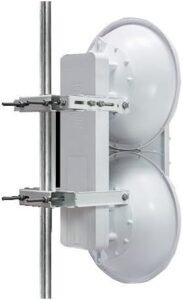Introduction :
In our increasingly connected world, WiFi and wireless networking have become integral parts of our daily lives. From homes to businesses, educational institutions to public spaces, the convenience and flexibility offered by these technologies have revolutionized how we communicate, collaborate, and access information. In this blog, we will explore the fundamentals of WiFi and point-to-point wireless networks, highlighting their benefits, functionality, and applications. Join us as we unravel the intricacies of wireless networking and discover how it has transformed the way we connect, both locally and globally.
Section 1:
Understanding WiFi
1.1
What is WiFi? WiFi, short for Wireless Fidelity, refers to a set of standards that enable wireless network connections. It utilizes radio waves to transmit data between devices, providing a seamless and convenient way to access the internet or connect devices to one another.

1.2
WiFi Standards and Protocols To ensure compatibility and efficient performance, WiFi networks adhere to specific standards and protocols, such as 802.11a, 802.11b, 802.11g, 802.11n, 802.11ac, and the latest 802.11ax (also known as WiFi 6). These standards determine factors such as data transfer rates, frequency bands, and network range.
1.3 Benefits of WiFi WiFi offers numerous advantages, including:
1.3.1
Convenience and Mobility: WiFi eliminates the need for physical connections, allowing users to access the internet or network resources from anywhere within the network’s range.
1.3.2 Scalability: WiFi networks can support multiple devices simultaneously, making them ideal for both small-scale and large-scale deployments.

1.3.3
Cost-effectiveness: Deploying WiFi networks can be more affordable compared to laying physical cables for network connectivity. .3.4
Flexibility: WiFi networks can be easily extended or expanded without extensive infrastructure modifications, providing flexibility for future growth.
1.3.5
Accessibility: WiFi enables connectivity in areas where wired networks are impractical or inaccessible, such as public spaces, airports, and remote locations.
Section 2: Point-to-Point Wireless Networks (600 words) 2.1 What are Point-to-Point Wireless Networks? Point-to-Point (P2P) wireless networks establish a direct connection between two devices, typically over a significant distance. These networks are commonly used for applications such as long-range communication, building-to-building connectivity, and backhaul connections for remote areas.
2.2
Functionality and Operation P2P wireless networks operate by establishing a direct wireless link between two antennas or devices. These links can be established using various wireless technologies, such as microwave, millimeter wave, or laser. P2P networks require a clear line of sight between the antennas to ensure reliable and uninterrupted communication.
2.3
Benefits and Applications P2P wireless networks offer several advantages, making them suitable for a wide range of applications:
2.3.1
High Bandwidth and Throughput: P2P links can provide high-speed data transfer rates, making them ideal for applications requiring significant bandwidth, such as video streaming, data backup, and remote surveillance.
2.3.2
Cost-effective Connectivity: P2P networks eliminate the need for costly leased lines or physical cables, providing a cost-effective solution for connecting remote locations or buildings.
2.3.3
Reliable and Secure:
P2P links are less susceptible to interference and offer enhanced security compared to shared wireless networks, as the connection is limited to the two linked devices.
2.3.4
Last-Mile Connectivity: P2P networks can be used to extend network connectivity to areas where wired infrastructure is impractical or unavailable, bridging the digital divide.
2.3.5
Disaster Recovery and Redundancy: P2P wireless links can serve as backup connections in case of wired network failures, ensuring continuity and minimizing downtime.
Section 3:
Convergence and Future Trends (250 words) As technology advances, WiFi and point-to-point wireless networks continue to evolve and converge, offering even more possibilities for wireless communication. Some emerging trends and advancements include:
3.1
WiFi 6 and Beyond: WiFi 6, with its increased speed, capacity, and efficiency, has set the stage for the future of wireless networking. Further advancements in WiFi technology will enhance performance and address the growing demands of connected devices and data-intensive applications.
3.2
5G Integration: The rollout of 5G networks brings ultra-fast wireless connectivity and low latency, enabling new applications and services that were previously not feasible. 5G and WiFi integration will provide seamless connectivity across different network types, offering enhanced user experiences.
3.3
Internet of Things (IoT): The proliferation of IoT devices necessitates reliable and scalable wireless connectivity. Both WiFi and P2P wireless networks will play crucial roles in enabling IoT deployments, connecting devices, and facilitating data exchange.
Conclusion:
WiFi and wireless networking have transformed the way we connect and communicate. WiFi provides the convenience and flexibility for local wireless connectivity, while point-to-point wireless networks bridge vast distances, enabling long-range communication and connectivity. As technology continues to advance, we can expect even more exciting developments, convergence with 5G, and the proliferation of IoT. Embracing these wireless technologies will unlock countless opportunities for businesses, individuals, and societies, empowering us to build a more connected and digitally inclusive future.

